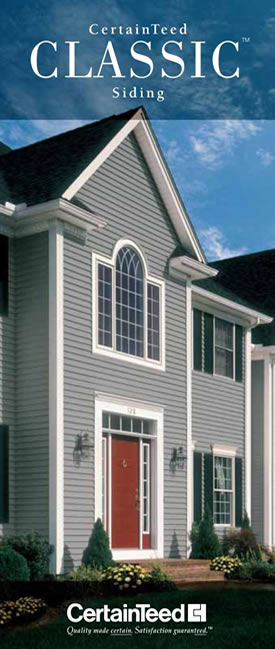Vinyl Siding
Beauty, durability, low maintenance and value. Whether you’re building a single home or remodeling an existing home, these are attributes you’ll certainly want. By including vinyl siding as the exterior cladding of choice. You may be surprised what you can achieve using vinyl and other polymeric siding, architectural trim and accessories. Vinyl siding helps create homes and neighborhoods with distinctive style and unique character that appeal to homebuyers and homeowners alike. And helps build communities of undeniable attraction and lasting value.
Beauty
Any look – historic to contemporary – can be achieved with today’s vinyl siding. Vinyl and other polymeric siding have the widest array of profile offerings of any other exterior cladding including:
- Horizontal and vertical panels
- Shakes, scallops, shingles, fishscales
- Traditional clapboard
- Dutchlap
- Beaded designs
Durability
Vinyl and other polymeric siding are available in a broad and ever increasing spectrum of solid and variegated colors including bold, rich tones like barn reds, hunter and sage greens, deep blues and more. Of course, exterior cladding has to look good for today’s discerning homeowners, but it also has a vitally important job to perform — protecting a home from the elements. With the ability to withstand high winds (certified up to 110 mph or higher) and a composition that resists heat, cold and moisture, certified vinyl siding retains its great looks over time.
Vinyl siding never needs paint. Ever. The only maintenance it will need is a simple wash with a soft cloth and garden hose to keep it looking great, a feature today’s strapped-for-time homeowners really appreciate! Unlike some other exterior cladding, vinyl siding provides exceptional rainscreening performance that reduces accumulation of water that can reach the underlying water-resistive barrier.


